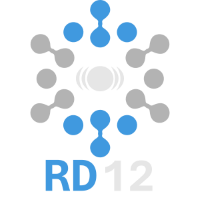Speaker
Description
solely deciphering structures and refining atomic positions, to the analysis of subtle structural effects. Examples involve unpredicted deviations in molecular geometries; the details of protonation states of functional groups, ligands and solvent molecules; occupancies of mixed states; atomic vibrations and, finally, electron density studies of active sites and ligands. Classical high-resolution cryogenic single-crystal MX remains an essential complement to time-resolved methods. The underlying data collection methodologies, in which radiation damage continues to be the most important consideration, are evolving from being able to predict diffraction half-life times towards providing optimal choices both delivering the highest data precision and preserving the interpretability of subtle structural features. In practice, virtually every such feature must be experimentally tested to exclude radiation damage artifacts.
The use of large, homogeneous beams at high photon energies up to 30 keV, in combination with high-Z detectors and advanced multi orientation data collection strategies [1, 2] are key. Given that ultra-high resolution diffraction experiments rely on the use of large, coherently diffracting crystals these experiments necessarily require large, top-hat X-ray beams. This is also a prerequisite for precise and reproducible X-ray dosage. We will review the instrumental aspects involved in creating and using such beams at modern beamlines, as well as the possibilities offered by the potential of fourth-generation synchrotron sources.
Finally, we will present the analysis of dose series collected on several ultra-high-resolution structures, both in reciprocal and in real space, in conjuction with previously proposed radiation-damage models [3, 4, 5].
References
[1] Donath, T. et al. (2023) J. Synchrotron Rad., 30, 723-738.
[2] Oscarsson, M. et al. (2019) J. Synchrotron Rad. 26, 393–405.
[3] Bourenkov, G. et al., (2006). The 4th International Workshop on X-ray Damage to Biological Crystalline Samples, SPring-8, Japan.
[4] Bourenkov, G. P. & Popov, A. N. (2010). Acta Cryst. D66, 409–419.
[5] Leal, R. et al., J. Synchrotron Rad. (2013). 20, 14–22.

